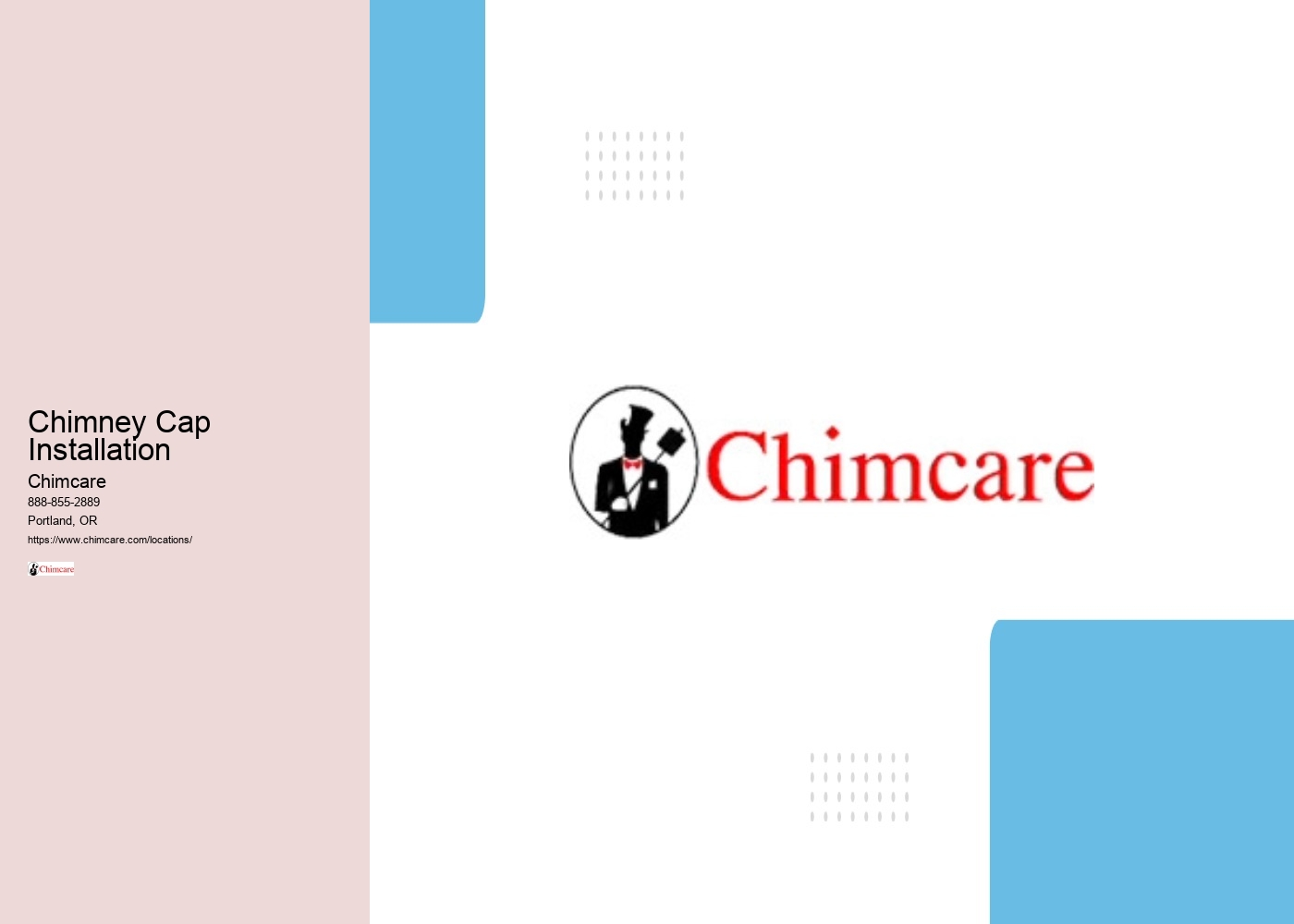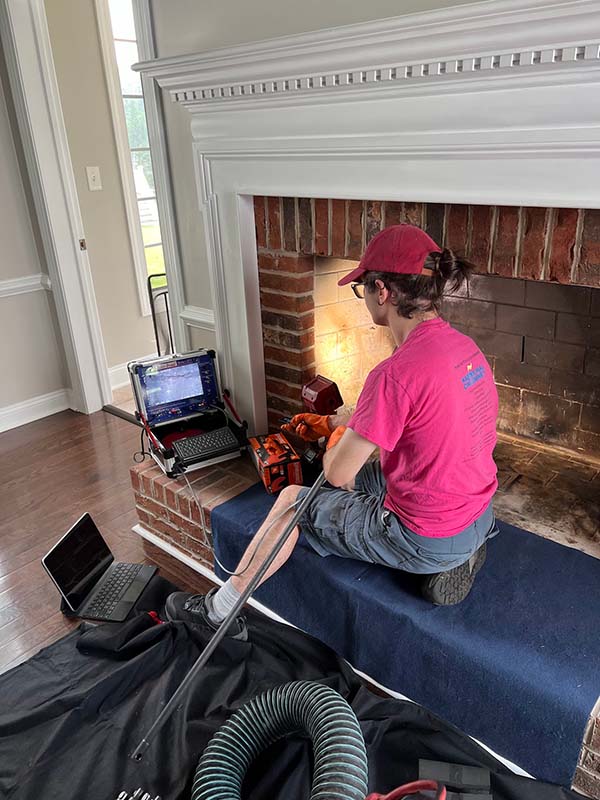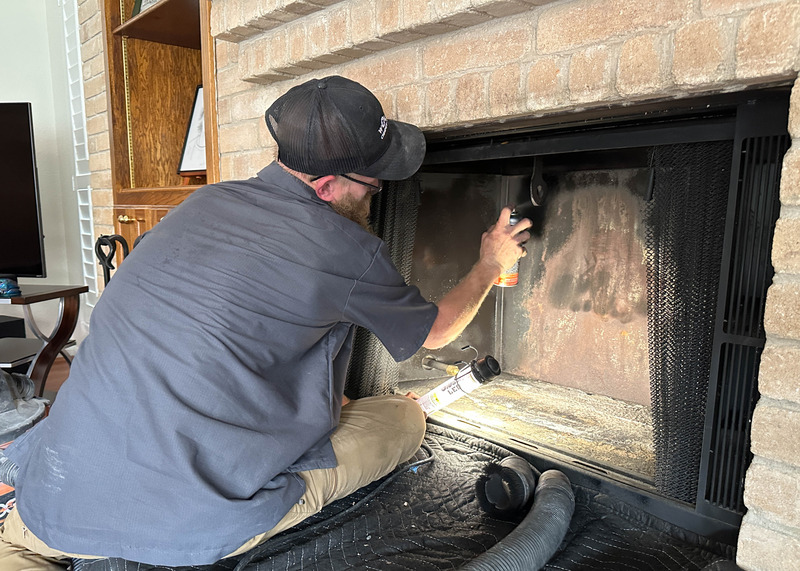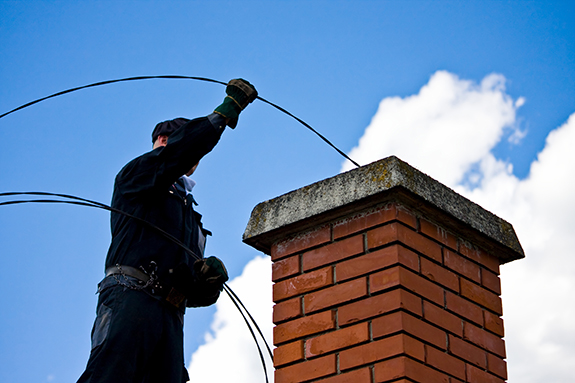

Chimney repointing is a critical aspect of maintaining both the structural integrity and aesthetic appeal of your chimney, as it involves the careful replacement of deteriorated mortar. Identifying early signs of mortar degradation, such as cracks and discoloration, can prevent more extensive and costly repairs down the line.
The process itself requires a meticulous approach, from evaluating the chimney's condition to selecting the appropriate mortar.
However, the nuances of mortar care and the timing for professional intervention often go overlooked. Understanding these elements can be pivotal for homeowners seeking to guarantee their chimney's longevity and functionality.
Chimney repointing is an important maintenance process that guarantees the structural integrity and longevity of a chimney. This procedure involves removing deteriorated mortar between brick or stone joints and replacing it with fresh mortar, thereby restoring the chimney's stability and appearance.
Repointing not only enhances the aesthetics of the chimney but also prevents water infiltration, which can cause damage to the chimney and adjacent structures. By addressing these issues early through repointing, homeowners can avoid more extensive and costly repairs in the future.
Regular assessment and timely repointing can greatly extend the life of a chimney, making it a fundamental component of home maintenance. Engaging professionals who specialize in chimney care guarantees that the work is performed to high standards, preserving the value and functionality of the chimney for years to come.
Identifying the signs of deteriorating mortar is essential for timely maintenance and prevention of further damage. Homeowners should be vigilant for several key indicators that suggest mortar degradation. One prominent sign is the presence of cracks or gaps within the mortar joints, which can compromise the structural integrity of the chimney.
Additionally, if mortar appears to be crumbling or flaking, it is a clear indication that it has lost its binding properties and requires attention. Another worrisome symptom is efflorescence, which manifests as white, powdery deposits on the surface of the mortar.
This occurs when moisture seeps through the mortar, carrying soluble salts that crystallize upon evaporation. Moreover, discoloration or staining on the masonry may suggest water infiltration, which can exacerbate mortar deterioration over time.

Typically, the repointing process involves several critical steps to guarantee the longevity and effectiveness of the mortar joints. The first step is to assess the chimney's condition, identifying areas where the mortar has deteriorated or crumbled.
Once the old mortar is removed, the joints should be cleaned thoroughly to eliminate dust and debris. This cleaning prepares the surface for peak adhesion. Afterward, the new mortar is mixed according to specifications, considering factors like color and texture to match the existing structure.
Application of the new mortar is performed with precision, filling the joints adequately and confirming proper tooling for a smooth finish. Finally, the areas should be cured appropriately to enhance durability and prevent shrinkage.
Selecting the appropriate mortar is essential for the success of any repointing project, as it directly impacts the structural integrity and aesthetic appeal of the chimney. The choice of mortar should be guided by factors such as the existing masonry, environmental conditions, and the specific requirements of the chimney.
Mortar is typically categorized into several types, including lime-based, cement-based, and proprietary mixes. Lime mortar, known for its flexibility and breathability, is particularly well-suited for older masonry that requires some movement without cracking.
Additionally, the color and texture of the mortar should harmonize with the surrounding bricks or stones to maintain the chimney's visual continuity. Consideration of the local climate is vital; for instance, in areas prone to freeze-thaw cycles, a more resilient mix may be necessary to prevent deterioration.

To guarantee the longevity of your chimney, it is essential to stay on top of regular maintenance tasks that promote its overall health and functionality. Begin with routine inspections at least once a year, preferably before the heating season. Look for signs of wear, such as cracks in the masonry or loose bricks, which can indicate underlying issues.
Regularly clean the chimney flue to remove soot and creosote buildup, which can lead to dangerous chimney fires. Utilize a brush designed for the specific size and shape of your flue. Additionally, make sure that the chimney cap is intact to prevent water intrusion and debris accumulation.
Checking the mortar joints is critical. If you notice deterioration, consider repointing to maintain structural integrity. Apply a water-repellent sealant to the exterior to protect against moisture and freeze-thaw cycles, which can cause significant damage over time.
Recognizing when to call a professional is essential for maintaining the health and safety of your chimney. Homeowners should be vigilant about early signs of deterioration, including cracked or crumbling mortar, visible gaps, or loose bricks.
Additionally, if you experience frequent chimney leaks, water damage, or mold growth in surrounding areas, these are indicators that specialized intervention is necessary. The presence of these issues may suggest that the chimney's structural integrity is compromised, requiring expert evaluation and repair.
Moreover, if you are unsure about the extent of damage or the appropriate repair methods, consulting a professional can provide peace of mind. Professionals possess the expertise and tools required to assess the situation accurately and implement effective solutions.

For DIY repointing, essential tools include a trowel for applying mortar, a pointing tool for shaping joints, and a joint raker for removing old mortar. Safety equipment, such as gloves and goggles, is vital to protect against dust and debris. Additionally, a chisel and hammer may be necessary for more stubborn mortar removal. Finally, a bucket for mixing and a sponge for cleanup will enhance the efficiency of the repointing process.
Repointing is not exclusively necessary for brick chimneys; it applies to various masonry structures. Any masonry that experiences deterioration in its mortar joints may require repointing to maintain structural integrity and aesthetic appeal. Factors such as weather exposure, age, and material composition can influence the requirement of this process. Regular inspections can help identify when repointing is crucial, regardless of the specific type of masonry involved. Proper maintenance guarantees longevity and safety.
Signs of an unsealed flue include noticeable drafts or cold air entering the space, an increase in energy bills due to inefficient heating, and the presence of soot or creosote buildup around the flue area. Additionally, homeowners may observe unusual odors, particularly when the heating system is in use, or experience difficulty maintaining consistent temperatures. Regular inspections and maintenance are essential in identifying these signs to guarantee peak performance and safety of the heating system.